Dealing with raccoon problems on your property can be frustrating and challenging. These intelligent and persistent creatures can cause significant damage to your yard, raid trash cans, and even pose health risks to your family and pets. Live trapping is one of the most effective and humane methods for raccoon control. This comprehensive guide reviews the best raccoon traps available today and provides expert advice on how to use them successfully.
Quick Picks: Best Raccoon Traps
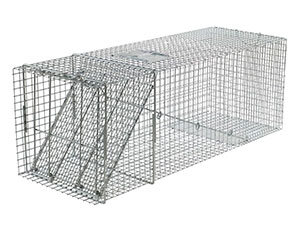
Editor’s Choice
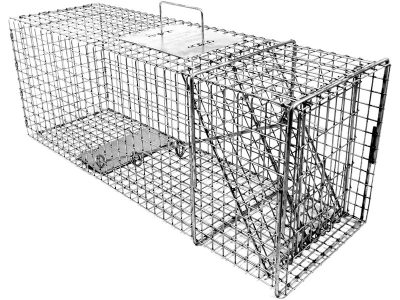
People’s Choice
Top 5 Best Raccoon Traps Reviewed
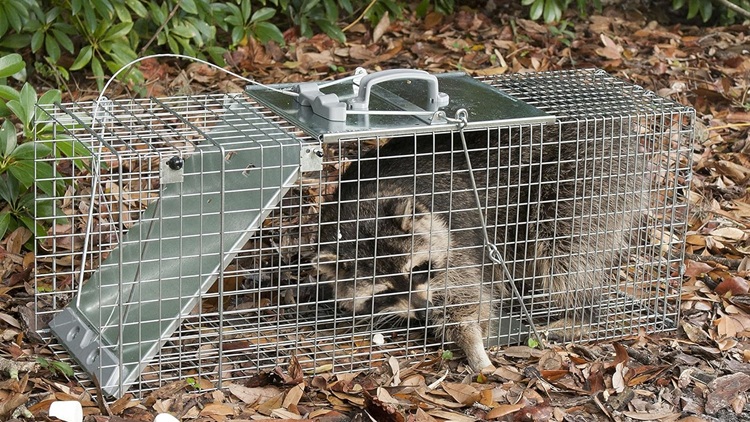
When it comes to humane raccoon control, live traps are widely considered the most effective solution. These traps allow you to capture raccoons without harming them, making relocation possible while complying with wildlife regulations in most areas. Here are our top picks for the best raccoon traps in 2025: When choosing a raccoon trap, it’s important to select one that is both durable and easy to use, ensuring the safety of the animal throughout the process. Additionally, understanding how to eliminate raccoons effectively involves not only trapping but also addressing the factors that attract them to your area. By following best practices for baiting and placement, you can significantly increase your chances of a successful capture. In addition to trapping, it’s also important to explore preventative measures to keep raccoons from returning. Alongside our recommended traps, we’ve also identified the best raccoon repellents for 2025 to help deter these critters from invading your space. Combining humane trapping with effective repellents can ensure a long-term solution to your raccoon problems.
Havahart Live Traps – Editor’s Choice
Havahart has established itself as the industry leader in humane animal trapping solutions, and their raccoon traps consistently receive top ratings from both wildlife professionals and homeowners. What makes Havahart traps stand out is their thoughtful design, durable construction, and user-friendly features.
Havahart traps are recommended by most wildlife management professionals based on their reliability, effectiveness, and humane design. Their built-in safety features protect both the animal and the person handling the trap, making them ideal for both professional and residential use.
Easy Operation
Patented Easy Set® mechanism allows for one-handed setup and release, making it accessible even for first-time trappers.
Safe Handling
Smooth internal edges and solid door handles prevent injury to both the animal and the operator.
Durable Construction
Made with rust-resistant galvanized steel that withstands outdoor conditions and repeated use.
Havahart Large 1-Door Trap (Model 1085)
Editor's ChoiceHow Does It Work
How to Use
- Place the trap on level ground in areas with raccoon activity such as near garbage cans or along fence lines
- Bait the trap with marshmallows, cat food, or sweet corn placed at the back beyond the trigger plate
- Set the door according to instructions and check the trap at least twice daily
- When relocating, cover the trap with a blanket to reduce animal stress
- Professional-grade construction with 12-gauge wire mesh
- Ideal size (32 x 10 x 12) for adult raccoons
- Smooth internal edges prevent animal injury
- Solid handle guard for safe carrying
- Rust-resistant galvanized steel for longevity
- Heavier than some competing models
- Single door design may be less effective for wary raccoons
- Trigger sensitivity may require adjustment
Havahart Large 2-Door Trap (Model 1045)
Most VersatileHow Does It Work
How to Use
- Position the trap along known raccoon travel paths such as fence lines or near building entry points
- Place bait in the center of the trap directly over the trigger plate
- Set both doors according to the manufacturer's instructions
- Ensure the trap is stable and won't tip when a raccoon enters
- Check the trap morning and evening to avoid leaving animals trapped for extended periods
- Dual-door design increases capture rate by up to 40%
- Generous size (36 x 10 x 12) accommodates even large raccoons
- Galvanized steel construction prevents rust and corrosion
- Gravity-action doors stay securely closed once triggered
- Higher success rate with trap-shy raccoons
- More complex to set than single-door models
- Slightly heavier and larger for storage
- Requires precise baiting to ensure animal triggers the plate
Tomahawk Live Traps
Tomahawk is another highly respected name in the wildlife control industry, known for their professional-grade traps that offer exceptional durability and performance. These traps are favored by many wildlife professionals for their reliability and sturdy construction.
Tomahawk Original Series Rigid Trap with One Door
Professional ChoiceHow Does It Work
How to Use
- Position the trap on stable ground in areas with raccoon activity
- Place bait at the far end of the trap beyond the trigger plate
- Check that the door closes fully when the trigger is activated
- Inspect the trap at least twice daily
- Transport captured animals with the trap covered to reduce stress
- Professional-grade construction for maximum durability
- 1\
- Premium price point
- Heavier than competing models
- Door may require occasional adjustment to maintain proper tension
Tomahawk Original Series with Two Trap Doors
Highest Catch RateHow Does It Work
How to Use
- Place along raccoon travel routes or between the animal's shelter and food source
- Position bait in the center directly over the trigger plate
- Set both doors according to manufacturer's instructions
- Ensure the trap is level and stable
- Check twice daily and handle with gloves when occupied
- Dual-door design significantly increases capture success
- Suitable size (32 x 9 x 9) for most raccoons
- Heavy-gauge wire construction for maximum durability
- Secure door locks prevent escape after capture
- Hand-built in the USA for consistent quality
- Higher price point than single-door options
- More complex to set up properly
- Slightly smaller internal height may be restrictive for larger raccoons
Raccoon Trap Buying Guide: What to Look For
Choosing the right raccoon trap is crucial for successful and humane capture. Here are the key factors to consider when selecting a trap:
Size
- Minimum 30″ length for adult raccoons
- 10-12″ height and width
- Too small = raccoon won’t enter
- Too large = ineffective triggering
Construction
- Galvanized steel for rust resistance
- Sturdy wire mesh (12-14 gauge)
- Reinforced door frames
- Smooth internal edges for safety
Trigger Mechanism
- Sensitive but not hair-trigger
- Protected from external tampering
- Reliable door-locking system
- Easy to set without injury risk
Always choose a trap with solid mesh flooring rather than wire grid floors. This prevents raccoons from reaching through to grab bait or injuring their paws while trapped. It also makes the trap more stable when placed on uneven surfaces.
How to Trap a Raccoon Successfully
Even the best trap won’t be effective if not used properly. Follow these expert guidelines to maximize your chances of successfully trapping raccoons:
Step 1: Select the Right Location
Place your trap in areas with clear signs of raccoon activity. Look for tracks, droppings, or damaged areas. The ideal trap locations include:
Place the trap on flat, level ground to prevent tipping or rocking when the raccoon enters. Position it with the door facing the direction from which raccoons are likely to approach.
Step 2: Choose Effective Bait
Raccoons are opportunistic omnivores with a strong sense of smell. The right bait can make all the difference in attracting them to your trap:
| Best Raccoon Baits | Why It Works | Placement Tips |
|---|---|---|
| Marshmallows | Sweet smell, unique texture, targets raccoons specifically | Place 2-3 at the very back of the trap |
| Canned Cat Food | Strong fishy odor, highly attractive to raccoons | Smear small amount on trigger plate |
| Sweet Corn | Natural food source, reduces non-target captures | Place several pieces beyond the trigger plate |
| Crisp Bacon | Irresistible smell, high-fat content appeals to raccoons | Hang piece from roof of trap above trigger |
| Peanut Butter | Strong scent, sticky consistency makes removal difficult | Smear small amount on trigger plate |
Create a “bait trail” by placing small amounts of bait leading up to and into the trap, with the largest portion positioned at the far end past the trigger plate. This encourages the raccoon to fully enter the trap before triggering the door.
Step 3: Set the Trap Properly
Follow these steps to ensure your trap functions correctly:
- Wear gloves when handling the trap to minimize human scent
- Test the trigger mechanism several times before baiting
- Ensure the trap is stable and won’t tip when a raccoon enters
- Check that the door closes completely when triggered
- Position bait so the raccoon must fully enter and step on the trigger plate
Always keep fingers clear of the door and trigger mechanism when setting the trap. Follow the manufacturer’s instructions carefully to avoid injury. Never attempt to handle a trapped raccoon directly—use the trap’s carrying handle and keep the trap at arm’s length.
Step 4: Monitor and Check Regularly
Check your trap at least twice daily—early morning and evening—to avoid leaving a captured raccoon in the trap for extended periods. Raccoons can become distressed and may injure themselves if left too long.
Trap Monitoring Tips
- Check traps first thing in the morning as raccoons are primarily nocturnal
- Inspect traps again before sunset
- Never leave traps unattended for more than 12 hours
- Provide shelter over the trap in extreme weather conditions
- If using multiple traps, check them in the same order each time
Step 5: Handle and Release Properly
Once you’ve captured a raccoon, proper handling is crucial for both your safety and the animal’s wellbeing:
Wildlife relocation laws vary by state and locality. Many areas require permits for trapping and relocating raccoons, and some prohibit relocation entirely. Always check with your local wildlife agency about regulations before trapping raccoons. In many jurisdictions, it’s illegal to relocate wildlife across county lines or into public lands.
If relocation is permitted in your area:
- Cover the trap with a blanket to reduce stress on the animal during transport
- Transport the trap in a well-ventilated vehicle
- Release in a suitable habitat at least 5-10 miles from your property (where legally permitted)
- Choose a release site with access to water, food sources, and shelter
- Point the trap door away from you when opening it for release
If you’re uncomfortable handling wildlife or local regulations prohibit relocation, contact a licensed wildlife professional for assistance.
Frequently Asked Questions
Is it legal to trap raccoons on my property?
Laws regarding raccoon trapping vary significantly by location. In most areas, homeowners can legally trap raccoons on their own property, but regulations regarding handling and relocation differ widely. Many states require permits for trapping and/or relocating wildlife.
Before setting any traps, contact your local wildlife agency or animal control office to understand the specific regulations in your area. Failure to comply with wildlife laws can result in significant fines.
What’s the best time of year to trap raccoons?
Late fall through winter (November to February) is generally the most effective time for raccoon trapping. During this period, food sources are scarcer, making bait more attractive, and raccoons aren’t typically raising young.
Avoid trapping during spring and early summer (March to June) when female raccoons may have dependent babies in dens. Trapping during this time could leave orphaned young that would likely not survive.
How do I know if I have raccoons or another animal?
Raccoons leave distinct signs of their presence, including:
- Five-toed tracks that resemble small human handprints
- Dark droppings about 2-3 inches long, often with visible berry seeds or food remnants
- Tipped garbage cans with scattered trash
- Torn shingles or soffits if accessing attics
- Rolled-up sections of lawn from foraging for grubs
Setting up a trail camera can help positively identify which animal is causing problems.
What should I do if I catch a skunk or other animal instead?
Non-target captures happen occasionally, especially with baits like cat food that attract multiple species. If you catch a skunk, approach very slowly and quietly, and drape a towel or blanket over most of the trap before opening the door from a distance using a rope.
For other wildlife, follow the same release procedures as you would for raccoons, maintaining distance and minimizing stress to the animal. Always check local regulations regarding handling of different wildlife species.
How do I clean and maintain my raccoon trap?
After each use, clean your trap thoroughly to remove animal scents and maintain proper function:
- Wear gloves and spray the entire trap with a disinfectant solution (1 part bleach to 9 parts water)
- Scrub with a brush to remove dirt, hair, and bait residue
- Rinse thoroughly with clean water
- Allow to air dry completely before storing
- Periodically check for damaged parts and lubricate moving components with food-grade silicone spray
Proper maintenance extends the life of your trap and improves its effectiveness.
Conclusion: Choosing the Right Raccoon Trap
Selecting the appropriate raccoon trap is essential for effective and humane wildlife management. Based on our comprehensive review, the Havahart Large 1-Door Trap emerges as our top recommendation for most homeowners due to its combination of durability, ease of use, and effectiveness. For professional wildlife managers or those dealing with multiple raccoons, the Tomahawk Original Series offers exceptional durability and performance.
Remember that successful raccoon trapping requires more than just the right equipment—proper placement, baiting, and handling are equally important factors. Always follow local wildlife regulations and consider consulting with a professional if you’re uncomfortable handling raccoons yourself.
While trapping can effectively address immediate raccoon problems, long-term prevention requires addressing the factors attracting raccoons to your property. Secure garbage cans, remove outdoor pet food, seal potential entry points to structures, and trim tree branches away from your roof to make your property less appealing to raccoons in the future.
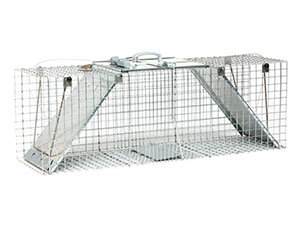
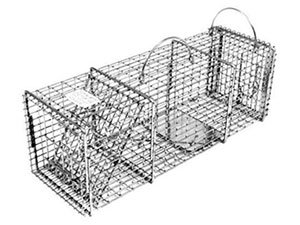
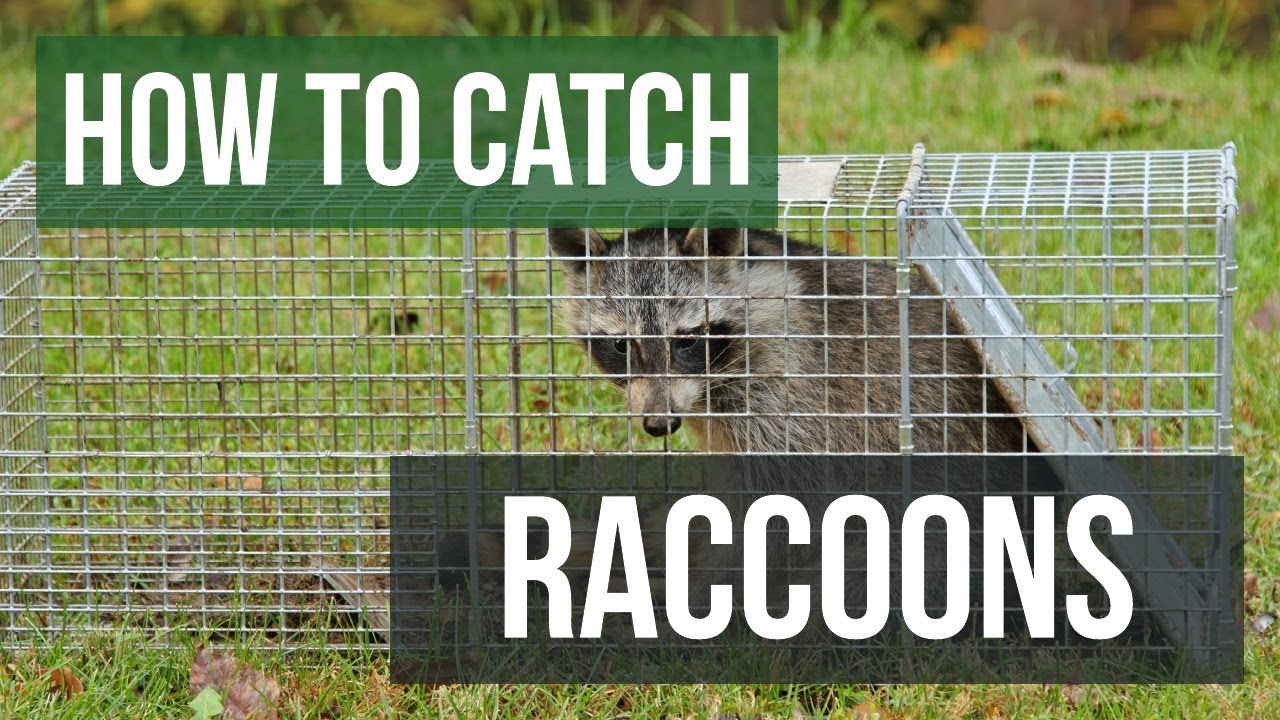

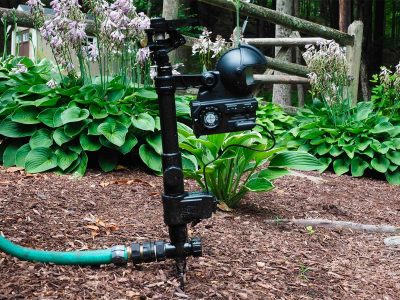
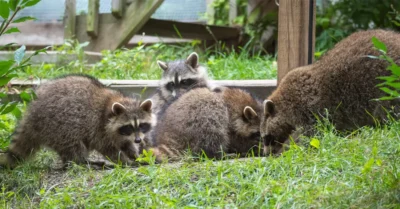

THE TRAP THAT I KNOW HAVE, BELEIVED PURCHASED THRU YOOU.
THE SIZE 36X10X12 BUT, YOU DONT GIVE THE SIZE OF THE WIRE MES\HING
AND RIBBING CONSTRUCTION? THE RIBBING ONE INCH SQUAR IS TO LARGE.
THE ANIMALS ARE ENTERING FROM THE SIDE AND EATING THE CONTENTS.
WHAT MODEL OF TRAPS THAT HAVE 1/2 INCH OR SMALLER BUT THE SAME SIZE
36X10X12
I HAVE A LARGE TRAP FOR CATS AND RACOON, HOWEVER,
THE CATS ARE REACHING INTO THE CAGE FROM THE SIDE AND PULLING
THE BAIT TO ONE SIDE AND EATING ALL CONTENTS.
THE WIRE RIBBING ON THE CAGE IS APPROXIMATELY ONE INCH
TO LARGE. THEREFORE I NEED A LARGE CAGE BUT, WITH SMALLER
METAL CONSTRUCTION RIBBIN ON THE WHOLE CAGE.
SO WHAT MODEL CAGES TO YOU HAVE WITH SMALLER WIRE RIBBING
BUT, LARGE ENOUGH FOR CATS AND RACOONS??
I have to disagree with your choice of Havahart traps as the best. I’ve had good success with mine, trapping over 30 raccoons in the past couple of months. However, the flaws in the Havahart design become apparent over time:
1) There is too much space between the wires at key locations, especially right at the back – raccoons can easily reach through and grab the bait unless it is secured in some fashion. They can also reach through from the inside and dig in an attempt to escape – makes quite a mess, a lot of which can get dragged into the trap.
2) The handle is flimsy and poorly attached, it keeps coming loose.
3) Raccoons are smart, and some can find ways of escaping from the Havahart, either through brute force or by reaching around the door and pulling on the spring (there’s a YouTube video of one doing exactly this).
4) The metal is already badly corroded, even though I carefully wash it down and dry it after each use.
I ordered a Tomahawk. The superior design is obvious from the start. ALL wires are closely spaced, so no reaching through. The door and locking mechanism look much more effective and escape-proof. It weighs about five pounds more than the Havahart, which seems to say something about the construction. Plus this one has a latched sliding rear door, so bait placement and releasing of racoons is much easier.
I read all the posts! one trick that I thought would end the game was to install a tower onto the trip plate, place the bait at the top of the 3 inch tall tower so when “greedy” grabbed onto it to pull out the bait it would be all over.. No such luck all the primer bait was gone the main load was not touched! after a week of this I put the trap away…
The Duke DP Coon Trap is the best raccoon trap.
Some Raccoons get very big- largest one ever caught was over 60 lbs- Think about that for a minute-best coon trap is a foot hold trap- also know as dog proof trap- will only catch coons & possum.
Caught them on vidieo reaching through from the side and pulling bait out piece by piece. Took 12 by 15 in piece of hardware clothe secured around edges with small hog rings over area on side of trap across from bait station
Before moving your problem to another place, creating a problem for someone else, check with your local and state wildlife people. Oregon does NOT allow removing fur bearing creatures from your property. You must deal with it on site = let it go or kill it.
Some raccoons are brilliant and/or large. Over the years I’ve trapped seven or eight in a Havahart collapsible trap. But the one entering through our cat-door now is brilliant — or fat.
It took the bait can out of the trap without triggering the trap.
I wired the bait can to the floor of the trap.
It ate all the bait, triggered the trap and was no where to be seen in the morning. I suspected it was so large that the trap door just hit it in the butt. I do not believe that even raccoons could open a Havahart door from the inside after it has fully closed.
I saw the thing in the kitchen eating the cat food a couple of times, as I suspected, it is huge. It came by outside the sliding glass door one time when I was sitting at the table, and stood up to look in and I think it was about 3 feet tall.
Plan B or maybe C. I put the cat in the garage for the night and filled the cat dish with chopped up rat poison blocks (Tomcat) with kibble on top. I saw the raccoon perched over the dish, but managed to back around the corner before it saw me. Set a timer for ten minutes and came back. The rat poison was stacked in a little pile around the dish and all the kibble was eaten.
I need a plan D. This is the demonic form of a raccoon.
The frustrating thing is that for more than ten years we never had a problem with raccoons coming in the cat door. We keep the cat food a couple of rooms away from the door, so there’s no immediate draw if they do poke their nose in the cat door. I suspect that someone in the neighborhood started keeping their pet food dish right next to their pet door. Then when a raccoon pokes its nose in, it sees the food and learns, “Hey, these little doors are portals to food. I’ll explore all of them.”
Don’t keep your pet food in the same room as the pet door. It teaches the raccoons.
Completely agree about eradicating rather than relocating. I relocated the first two or three I caught, but that’s just making them someone else’s problem. These things are only cute in cartoons and they smell **bad**.
This is to Jeff Walther, if you haven’t caught that smart bugger yet. Try using the wet canned cat food and crushed poison pellets, then mix them. Don’t mix them so well that they’re like one blend of mush. Mix it just enough so that Rocky Raccoon can’t separate the poison from the cat food. His overwhelming greed and huge appetite will, or should, eventually overcome the part of his brain that’s telling him not to eat the poison. Good luck and let us know if it works.
Carbon Monoxide from a running car is a humane and quick way to kill anything rats, mice raccoons etc. Put the entire cage in a large plastic bag cinch up the neck with duct tape around a beer can with both ends cut out, then slip over the tail pipe. start car.
I have seen this done and the animal sat very still and quietly fell over with its eyes still open, after 15 seconds. Two hours later it was removed from the cage and buried. Make sure it is not just unconscious.
Someone mentioned using carbon monoxide. That’s actually a pretty darn good idea. I asked my doctor about how a person dies who’s exposed and he said they’re dead in about five minutes and it’s more or less like falling asleep, but quicker. Sounds like that would be the most humane way to do it. Relocation is a joke, not to mention cruel to the animals AND the people who live in the ‘new’ area.
One word of caution about using the carbon monoxide emissions from your car. That is, for the purpose of euthanizing raccoons. Please DO IT OUTSIDE YOUR GARAGE AWAY FROM YOUR HOUSE!!! Remember, CO kills people too.
Raccoons are territorial and if you real ease them there there is a high chance that the raccoon will be killed by other raccoons
we have a very smart raccoon visiting us. He/she manages to go in, eats the food, and then leaves and after eating the food trips the cage on the way out. What can we do? The raccoon also leave “presents (poop)” at our pool.
Relocating the raccoon is impracticable treats the symptoms of the problem and not the cause.Just passes the buck and no guarantee they won’t find there way back and I thought that wasn’t legal in most areas anymore.Your not even allowed to take more aggressive steps to protect your family and property.You can’t drop them off in the park any more and Rangers bwont come out and pick them up even though they get a generous amount of our tax money.
In most states it is illegal to relocate a live trapped wild animal for many of the previously mentioned reasons. Check your local laws and if you don’t have the means or the inclination to destroy a trapped animal, leave it to the professionals.
Racoon’s have a parasite in their fecal matter. When the parasite eggs in the fecal matter are kicked or hit with the lawn mower the eggs attach to dust particles and when inhaled by humans the result is death. There is no treatment. I was directed by Washington state fish and game to kill any and all raccoons period! Relocating racoon’s is illegal!
So, you’re basically recommending that I relocate the raccoon to someone else’s neighborhood? What happens if someone from that neighborhood is simultaneously relocating their raccoons to my neighborhood? You’re recommending nothing more than a raccoon exchange program!
I think you mean to say humane and Humane Society rather than human.
Anybody have any ideas for trapping a rabid raccoon that happens to live–and eat–in the same area that has a colony of stray and feral cats? Don’t want to trap the cats. They’re being taken care of by some folks and aren’t bothering anything or anyone. Ideas? I’m all ears…
We have been trapping raccoons and have caught 5 with this advice. My top 3 tips are:
1 release the raccoon the morning you catch it.
2 find where the raccoons enter your yard, and make a mini marshmallow trail into the trap.
3 it is not necessary to take the raccoon 10 miles away if you release it on the other side of a body of water.
I hope these were helpful. Happy trapping!
It is illegal to relocate wildlife in the state of California. If you trap a nuisance raccoon in California you can either kill it, release it on site, (i.e. in your yard where you trapped it) or see if your local animal control will take it. (and kill it for you)
Racoon gets t he bate from behind the plate trips the door but gets away.
The Easy Set traps are wonderful. Much easier to work with.
However, raccoons are smart.
1. Set trap out. Coon rolled the trap on its side and ate the bait.
2. Pinned the trap with rebar. Coon pulled the trip plate wire out. Ate the bait.
3. Put rebar outside the trip wire to protect it. Coon apparently big enough to sit in front of the trip plate and reach over it to eat the bait.
The pro trappers wire a 1/3 open can of sardines to the back wall, hoping the coon will make a mistake and hit the trip plate.
My perfect coon trap:
a. stainless steel or structural aluminum
b. easy set
c. protected trip plate wire (can’t be pulled out of trip plate)
d. flanges for ground anchor pins (and a chain).
e. bait “window” that can’t be reached thru from outside
e. longer trip plate to back wall distance.
“Coon rolled the trap on its side and ate the bait”
I had that problem to nights in a row. So I took two horseshoe stakes and pounded them in the ground one on each side of trap. Looked out the next morning and had another raccoon. Someone said Racoon gets the bate from behind. What you can do is put the back of trap against something like a big tree or shed. Just caught my 29th coon yesterday.
“Please” do not relocate any raccoons, we don’t want them around us either. They kill our chickens, harm our farm animals and spread diseases, then we have to deal with them. I lost 13 chickens last night alone.
Yes same problem here, sudden increase in raccoons around my property so im guessing they werent always in the area. I’m planning on shooting the bastard after it slaughtered 6 of my brand new bantam breed hens. Raccoons are pests and should be dealt with as such, no mercy.
We had a raccoon that was coming out in the daytime. Don’t know why because they are night creatures. I watched it as it was heading for my trap. I had put heavy plastic on the back of my trap I got at Tractor Supply. Instead of going in the trap to get the food it worked to get that plastic off and it did. It reached in and got the food. Next day it was back and I had no choice but to shoot it. Traps do work though. I now have caught 26 raccoons in my traps.
I have tried everything to trap a second raccoon,all types of food mentioned,bleached the trap,wore gloves to bait the trap, different locations,and stayed up one night in the house and watched the coon walk around the trap and nothing. If I could shoot the s.o.b. where I live I would but I cannot,so now what PROS
Raccoons have gotten into my coop and killed 1 chicken a night for 3 nights, even after I secured the coop. The most recent night, the raccoon avoided the “easy” food in the trap and pried open the construction mesh around the door of the coop, climbed into the coop, got the chicken but couldn’t get the chicken out of the same area the raccoon got in, so left the carcass on the coop floor. The coop was in shambles. I’ve been housing my lone chicken in the garage at night until I can catch the SOB. So far, the humane trap has not lured the raccoon. I’ll try disinfecting the coop and setting it again tonight, but I figure my scent is all over the coop, and the raccoon is not avoided that. Raccoons are horrible beasts — they don’t even eat the chicken; they just bite off the head at the neck and eat out the insides of the chicken, leaving the chicken body mostly intact and the head lying nearby.
That’s a weasel doing that
Completely worthless information. 100% useless. I have been working with professional animal control teams since September of 2015. It is now late April of 2016 and we haven’t caught them. Six traps have been set around the house every night baited as this article suggests and no luck. They just go into the traps and get what they want and then leave. The Havahart traps do not fire off but the bait is gone. This article is 100% nonsense and misleading. None of this works – the pros have tried it all.
I disagree. Raccoons were getting into my wife’s bird feeders so I went to Tractor Supply and got two traps. Yesterday I got my 24th raccoon. They will eat about anything but they are lazy. If I have food in the traps on the ground they will go for that instead of climbing a tree to get to the feeders.
Totally agree. After two nights with a Havahart, bait gone and trap sprung but no raccoon. I figure the smart animal is able to lift the very light trap door. It’s possible the ‘coon is large and the door is coming down on its back, enabling it to back out after dining, but either way the trap is the problem.
BTW, is this website in any way associated with the Havahart company? Sure sounds like it.
I’ve caught 2 with a knock-off Havaheart-style trap I bought at Rural King for about $25. First was baited with a can of cat food, second with an old chunk of summer sausage in a plastic bag that I cut some holes in. I have lost bait on one occasion. My grandmother had a large raccoon on her property. It was so big, the trap door wouldn’t close all the way while it was eating the bait (it’s butt was in the way; maybe a smaller trap?). They wired a piece of bacon to the far end of the trap so it would have to work to get it free. They caught the raccoon.
Having the same problem. The trap isn’t big enough. May be your problem? If the county can’t help me, I’ll try the animal repellent sold in OSH. My dog was bit, and my yard is pulled apart. I’m concerned for my grandchildren’s safety not to mention, mine. Good luck.
Try putting skinny sticks through the trap right over the bate. Make sure the container is wired to the back and centered. The sticks will make it work to get the food and rockie will forget about the trigger. What you’ve got is an experienced coon. He has been trapped so many times that it is just fun to him. I suggest ,if you don’t have the balls to kill them, you should not trap and teach them . You’re just making it more difficult for the guy .who really cares to get rid of the rabbid vermin.
I have several of my dad’s old style havahart traps and they work great. Have caught well over 30 raccoons and possums. Most reliable bait I’ve found is a dish of Pepsi and marshmallows behind the plate with a small trail of marshmallows leading up to it.
you set the pin wrong didn’t you? i had the same problem. for a month i was catching a ground hog a day and then nothing for a month, bait kept going missing. then i realized i placed the pin in a position that it wouldn’t trigger the plate.
@ GREG APR 22, 2016. sorry first time here, thought the reply would go to the person i was replying to.
Removing to another location is incorrect. Call animal control. Raccoons have diseases and will bring their disease to a new area, killing the native animals which don’t have disease resistance. If they are trash eaters, they will starve as they never learned how to fish, find and eat acorns and the standard wilderness food. Farmers don’t want them and will probably set death traps.
In your article at one point you say take the animal at least five miles away from your property. Later you say If you want to be sure, raccoon won’t return, bring the animal at least 10 miles away.
Which is right. 5 or 10 miles?
Thanks
25 MILES O R MORE! Dem der raccoons are smart like cats. they both need to be hauled a long ways away